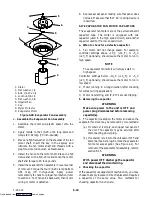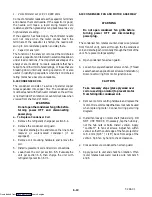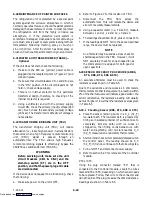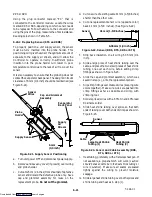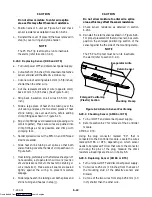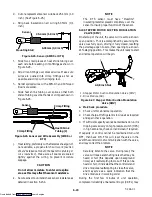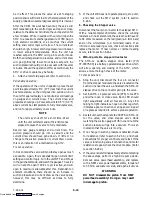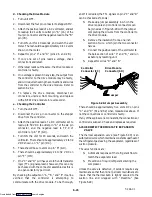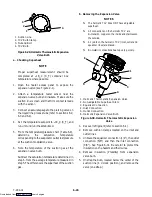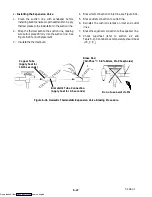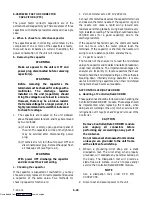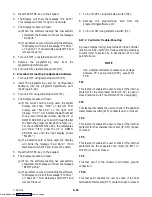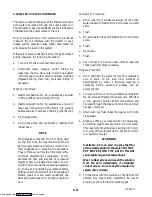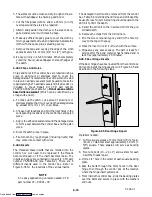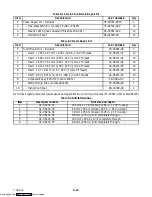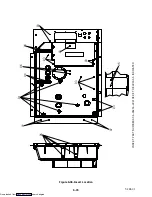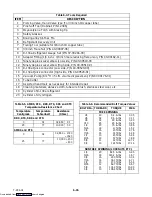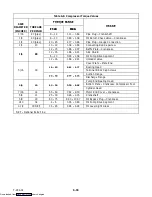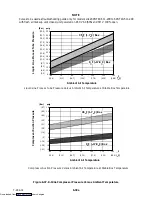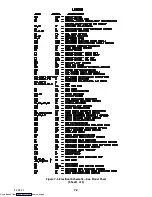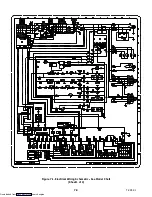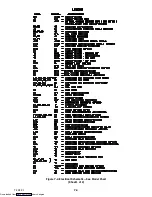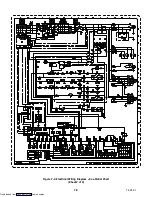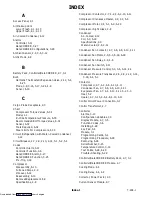
6-32
T-294-01
Centrifugal pump
30 GPM at 35’ head
Pump
Suction
Pump
support
Tank
Fine mesh
screen
Return
Remove water
regulating
valve
Condenser
Globe
valves
Gas
vent
Close vent pipe
valve when pump
is running.
Priming
connection
Figure 6-33. Water-Cooled Condenser Cleaning --
Forced Circulation
6. Allow the Oakite No. 32 solution to soak in the tube
coils
for
several
hours,
periodically
pump-circulating it with an acid-proof pump.
An alternate method may be used whereby a bottle (see
Figure 6-34) filled with the solution and attached to the
coils by a hose can serve the same purpose by raising
and lowering of the bottle. The solution must contact the
scale at every point for thorough de-scaling. Air pockets
in the solution should be avoided by regularly opening
the vent to release gas.
Keep flames away from the vent
gases.
7. The time required for de-scaling will vary,
depending upon the extent of the deposits. One way
to determine when de-scaling has been completed is
to titrate the solution periodically, using titrating
equipment provided free by the Oakite Technical
Service representative. As scale is being dissolved,
titrate readings will indicate that the Oakite No. 32
solution is losing strength. When the reading
remains constant for a reasonable time, this is an
indication that scale has been dissolved.
8. When de-scaling is complete, drain the solution and
flush thoroughly with water.
9. Following the water flush, circulate a 56.7 gram (2
ounce) per 3.785 liter (1 U.S. gallon) solution of
Oakite No. 22 thru the tubes to neutralize. Drain this
solution.
10.. Flush the tubes thoroughly with fresh water.
NOTE
If the condenser cooling water is not being used
as drinking water or is not re-circulated in a
closed or tower system, neutralizing is not
necessary.
11. Put the unit back in service and operate under
normal load. Check the head pressure. If normal, a
thorough de-scaling has been achieved.
What You Can Do For Further Help:
Contact the Engineering and Service Department of the
OAKITE PRODUCTS CO., 19 Rector Street, New
York, NY 10006 U.S.A. for the name and address of the
service representative in your area.
Fill condenser with
cleaning solution. Do
not add solution more
rapidly than vent can
exhaust gases caused
by chemical action.
Condenser
Vent
pipe
1” Pipe
5’ Approximate
3’ to 4’
Figure 6-34. Water-Cooled Condenser Cleaning --
Gravity Circulation
6.29 CONTROL BOX REPAIRS
6.29.1Introduction
This procedure provides instructions for repair of the
Carrier Transicold composite control box. Damage to
the control box may be in the form of a chip or hole, a
crack, a damaged thread insert or damage to the door
hinge inserts. Generally, the object of the repair must be
to ensure sufficient strength is restored to the damaged
area and the repair must keep the box water tight.
Information on repair kits and repair procedures for each
type of damage is provided in the following paragraphs.
Ambient temperature must be above 7
°
C (45
°
F) for
proper curing of epoxy repairs.
6.29.2 Cracks
Cracks in the control box are repaired using a fiberglass
patch over the damaged area. Materials required are
included in the Fiberglass Patch Kit supplied with Crack
Repair Kit, CTD part number 76-00724-00SV (see
Table 6-1 ).
Downloaded from

